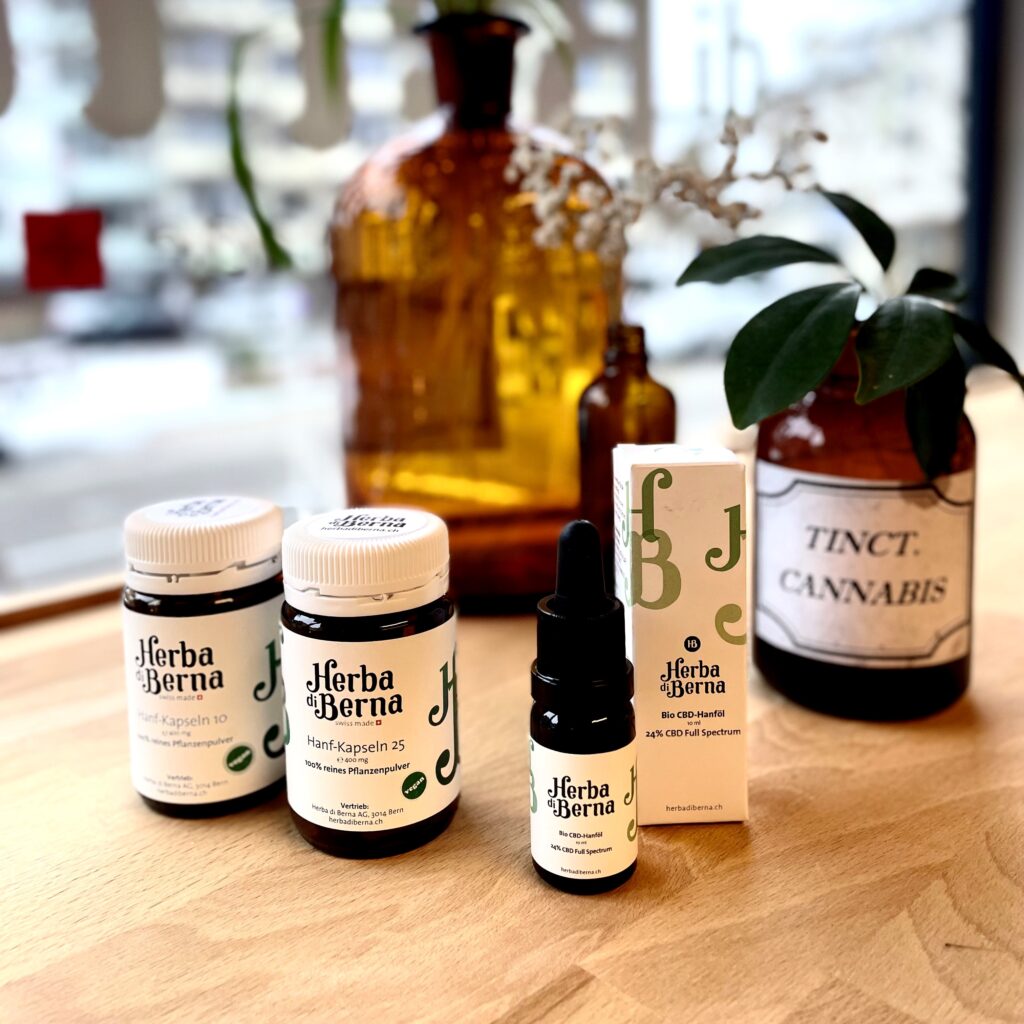
A summary of the article about CBD edibles and their legislation in Switzerland by IG Hemp
Edibles with CBD, i.e. edible products with cannabidiol, are currently causing a stir. Edibles are being tested in pilot projects in Switzerland– unlike in Germany, where they are banned due to the protection of minors.
But what exactly is allowed? And what opportunities and risks do CBD foods entail and why does Switzerland exclude CBD and cannabis foods from the law?
If we take a closer look at the Swiss legislation (also discussed in more detail in our blog on hemp tea or in the Novel Food Ordinance), we quickly see that foods containing THC are classified as novel foods by the FOPH and are therefore subject to strict regulations. Nevertheless, they are currently being tested in pilot projects to better understand their effects.
According to the current legal situation, the Federal Food Safety and Veterinary Office (FSVO) classifies CBD edibles as “novel foods”. These may only be placed on the market with special authorization.
“Foods containing CBD or THC are considered novel foods in Switzerland and may only be placed on the market with the approval of the Federal Food Safety and Veterinary Office (FSVO).”
– Federal Food Safety and Veterinary Office (FSVO), Art. 15 para. 1 LGV
International experience and safety concerns
Experience from Canada and the USA shows that the introduction of edibles has led to an increase in unintentional poisonings in children under the age of ten. In Canada, recommendations were therefore made to prevent such incidents.
Different legal framework conditions
In Switzerland, foods containing THC are classified as novel foods. Nevertheless, legal regulations allow THC edibles to be given to test subjects as part of pilot trials.
Calls are now being made to relax the regulations
Despite concerns, there are discussions about the sale of CBD edibles. The Maltese cannabis lobby Releaf argues that the sale of edibles containing THC in harm reduction facilities does not violate European law.
How can risks be minimized?
As overseas experience in Canada and America shows, there are potential risks associated with the sale of edibles in terms of the protection of minors. However, these can be reduced through technical ideas such as child-resistant packaging, preventative education campaigns and information on packaging. Careful regulation is crucial for successful implementation.
Conclusion
The regulation of cannabis edibles is important to establish a clear protection of minors and consumers. For this to succeed, a careful balance must be struck between health risks and the potential for harm reduction. Technical measures on packaging and comprehensive education of the public and future sales staff are essential to ensure the safety of consumers.
Sources: Cannabis edibles – health risk or “harm reduction”? – IG Hemp Switzerland
Further sources:
- Cannabis regulation in Germany – opportunities and side effects for Switzerland
- Experiences in the USA and Canada: what Switzerland can learn from them
- Cannabis lobby Releaf insists allowing THC edibles to be sold at harm reduction associations would not go against European Union legislation
- Final report of the expert panel reviewing the Cannabis Act in Canada
This article was created according to SEO guidelines to ensure optimal visibility and reader-friendliness.





























